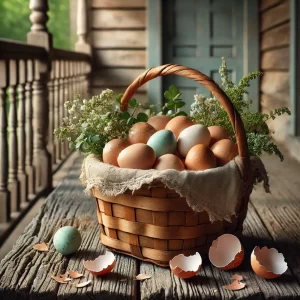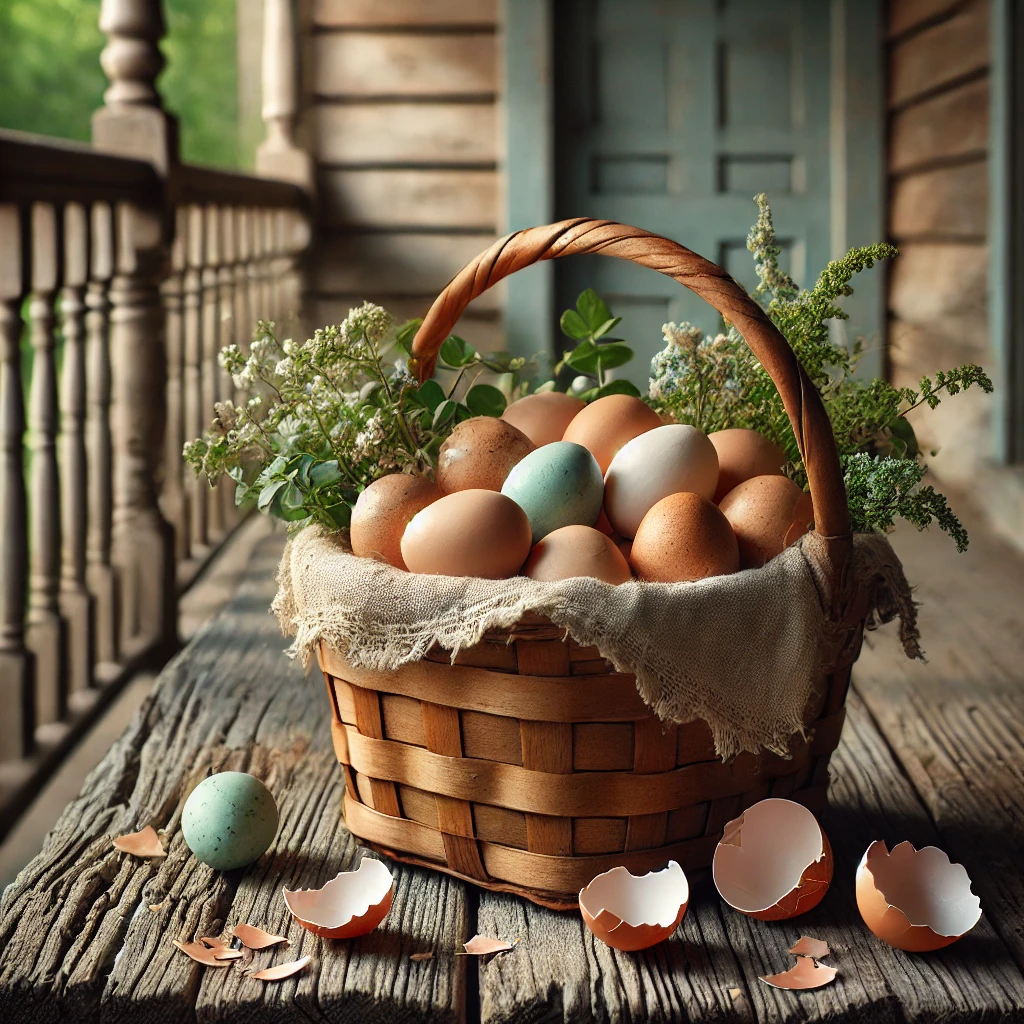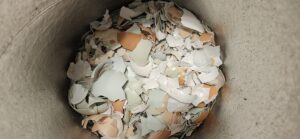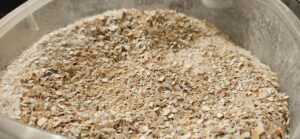 Having chickens means eggs (which is the point, of course), and lots of eggshells. Which means either trashing them, or finding something to do with them. I’ve been crushing and saving them to give back to the chickens if they need the calcium, but there’s far more shells than I need for the chickens, so thankfully they will also be very useful in the garden next spring. I wanted to put together a post for others who aren’t sure what eggshells can be used or or how to use them, so here goes!
Having chickens means eggs (which is the point, of course), and lots of eggshells. Which means either trashing them, or finding something to do with them. I’ve been crushing and saving them to give back to the chickens if they need the calcium, but there’s far more shells than I need for the chickens, so thankfully they will also be very useful in the garden next spring. I wanted to put together a post for others who aren’t sure what eggshells can be used or or how to use them, so here goes!
1. Soil Enrichment
- Calcium Source: Eggshells are rich in calcium carbonate, which helps prevent calcium deficiencies in plants like tomatoes, peppers, and eggplants. This can reduce issues like blossom-end rot.
- Slow-Release Fertilizer: As shells decompose, they gradually release nutrients into the soil.
2. Pest Control
Eggshells also serve as an effective tool for pest control. When crushed and scattered around plants, they create a physical barrier that deters pests such as slugs, snails, and some crawling insects. Their sharp edges make it uncomfortable for soft-bodied creatures to navigate, protecting your plants without the need for chemical pesticides.
3. Soil Improvement
- Soil Structure: Another small but useful benefit is the improvement of soil structure. Crushed eggshells enhance aeration and water movement, making the soil more conducive to healthy root growth. This, in turn, helps plants thrive by providing them with a well-drained and nutrient-rich environment.
- Increase pH: For gardeners dealing with acidic soils, shells can help by slightly increasing the pH, creating a more neutral and hospitable environment for many vegetable plants.
- For best results, work the shells into the soil a few weeks before planting.
4. Composting
In composting, eggshells decompose quickly and contribute valuable minerals to the mix. They also help balance the green-to-brown ratio in compost bins, ensuring an effective decomposition process.
5. Seed Starting
Eggshells are also useful for starting seedlings. Halved shells can serve as biodegradable seedling pots, offering a natural and sustainable alternative to plastic containers. When the seedlings are ready to be transplanted, the entire shell can be planted directly into the soil, minimizing transplant shock while continuing to provide nutrients as it decomposes.
Drying Eggshells
Drying eggshells before using them in a garden is highly recommended. Here’s why:
1. Easier to Crush
- Dry egg surface area and speeds up decomposition in the soil.
2. Reduces Odor
- Fresh eggshells may retain a slight odor that can attract pests like insects and small critters. Drying eliminates moisture and odor.
3. Prevents Mold
- Moist eggshells can develop mold if stored or used immediately in the garden, which could be harmful to plants.
4. Convenient Storage
- If you’re collecting shells over time, drying them allows for clean, odor-free storage until you’re ready to use them.
How to Dry Eggshells
- Rinse eggshells to prevent pests or mold.
- Oven Drying: Place the eggshells on a baking tray and bake at a low temperature (200°F or 93°C) for about 10 minutes.
- Microwave Drying: Heat for 1-2 minutes to dry them quickly.
- Air Drying: If needed, you can simply leave them spread out, in a well-ventilated area, for a few days after rinsing.
Once dried, crush or grind the shells by hand or in a food processor, and apply them to your garden as needed!
- A squirrel completely wrecked my plans - May 20, 2025
- Whole Wheat Bread - April 21, 2025
- Ham & Bean Soup - February 2, 2025


